#SDWAY
Text
So, Bob Singer worked on several Hanna Barbera projects, and helped with building SDWAY, and seemingly many of the shows to follow. Like, just look at this art

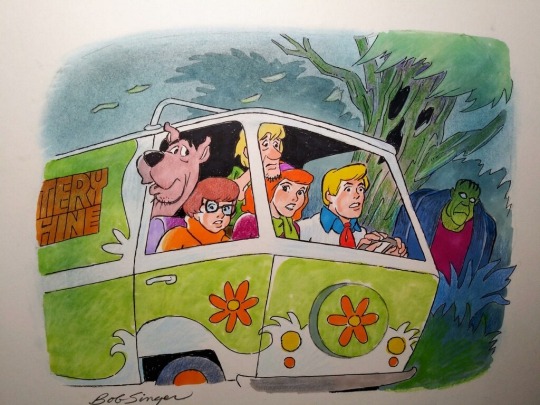
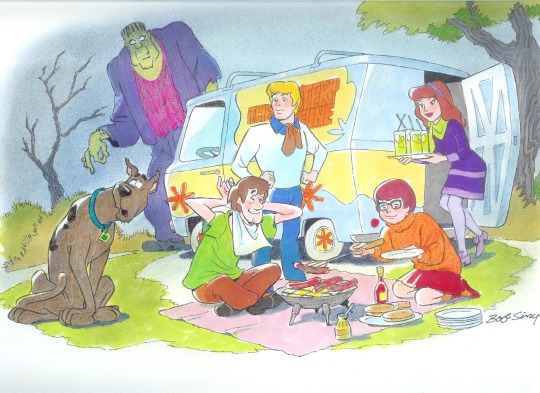
These 3 specifically read as a series of events to me and I love that sm
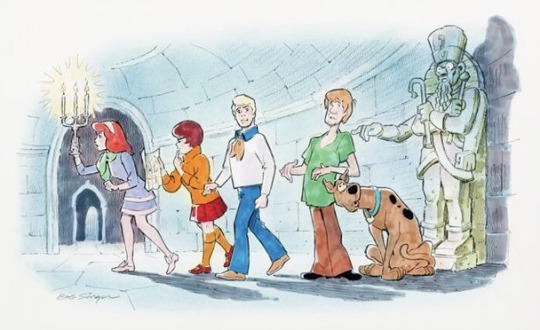
Love how this one shows Daphne taking charge in a way we don’t often see outside of the scrappy era and some of our modern incarnations

I absolutely ADORE this piece omg. Like it’s just so well composed and I absolutely love how he draws the classic monsters, who he had a hand in designing.
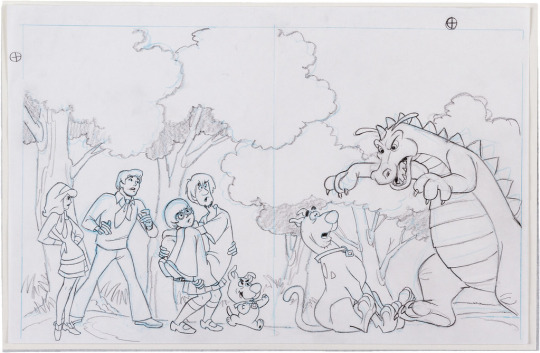

The first picture was the cover art for an 80s coloring book which I wish we had scans of online, and the second is ofc a sketch of the APNSD cast and I love it sm fr

THIS PIECE. MWA.
Suffice to say, Bob Singer’s work on Scooby Doo is beautiful, and he has undeniably created a large impact on the franchise.
#scooby doo#bob singer#Hanna barbera#daphne blake#fred jones#velma dinkley#scooby doo where are you#a pup named scooby doo#APNSD#sdway#concept art
522 notes
·
View notes
Text
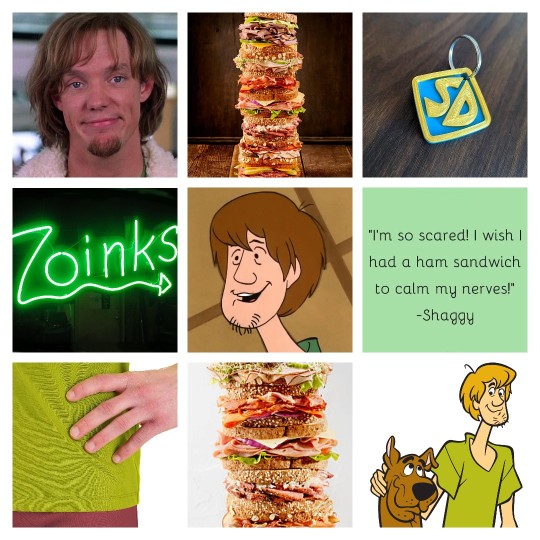
Shaggy from Scooby Doo based moodboard~ ^^
For an anon!! Hope you like this!
Want one? Send an ask! -mod Jay
#shaggy#shaggy scooby doo#scooby doo#sd shaggy#sdway#sdmi#shaggy rogers#norville shaggy rogers#moodboard#moodboards#mood board#mood boards#mood#moods#food#food tw#tw food#edit#edits
110 notes
·
View notes
Text
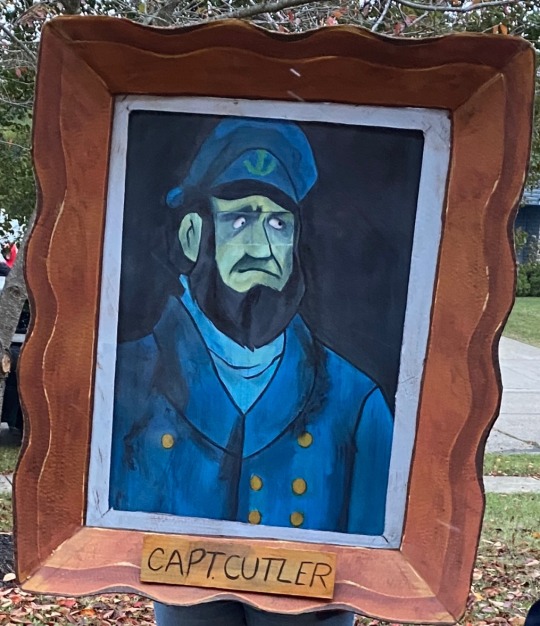

happy halloween!!
#i was the portrait of captain cutler from a clue for scooby-doo lmao#and i KNOW he does not have the moving eyes bit but i had to do the moving eyes its so fun#scooby-doo#sdway#scooby doo where are you#captain cutler#i did so much for this costume lmao#so much painting..
127 notes
·
View notes
Text

Results from my latest study.
"The most used catchphrase was “zoinks,” at 87 occurrences across 25 episodes, averaging 3.48 zoinks per episode. Some episodes had no zoinks, with a notable 3-episode consecutive gap mid-season 1. Overall, zoinks usage trended positive; season 1 averaged 3.12 zoinks per episode while season 2 averaged 4.25. Jeepers was used once and there were no jinkies."
37 notes
·
View notes
Photo






(via GIPHY)
#giphy#animation#cartoon#my edit#fred#scooby doo#shaggy#scooby#daphne#hanna barbera#velma#scooby doo where are you#hanna barbera cartoons#70s cartoons#scooby doo gifs#sdway#hanna barbera gifs#scoobydooedits#scooby doo edit#my gifs#source: giphy
64 notes
·
View notes
Text
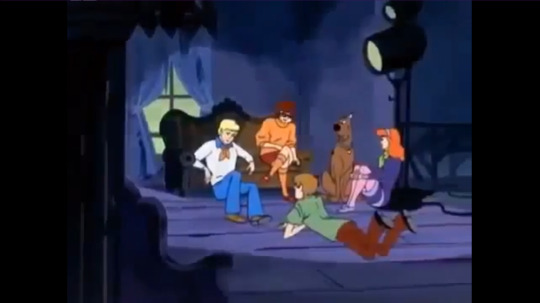

SCOOBY-DOO, WHERE ARE YOU! (1969) | S01 E07 "Never Ape an Apeman" 00:05:34
#tms blender renders#ts4 render#sims 4 render#scooby doo#scooby doo where are you#SDWAY#💜 --- daphne ann blake#🧡 --- velma dace dinkley#💚 --- norville 'shaggy' rogers#💙 --- frederick herman jones#scene replication
63 notes
·
View notes
Text
a vanfull of teenagers all dating each other
scooby doo 🤝🏼 dndads 2
40 notes
·
View notes
Text

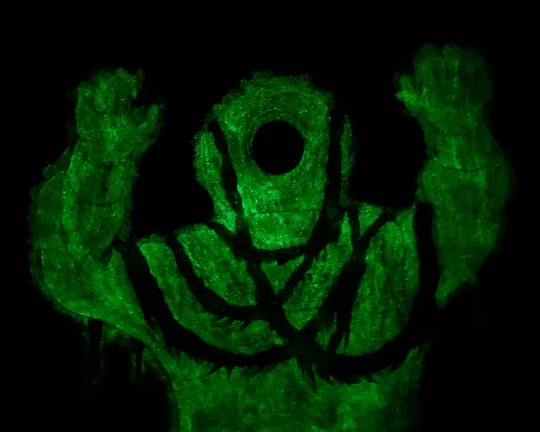
The Ghost of Captain Cutler, Day 26
#art#illustration#inktober#pen and ink#inktober 2023#Inktober day 26#scooby doo#scooby doo where are you#sdway#hanna barbera#hanna barbera cartoons#60s cartoons#70s cartoons#cartoons#glow in the dark#Captain cutler
12 notes
·
View notes
Text

Space kook is always gonna be one of the most iconic scooby monsters, who can forget that laugh!
13 notes
·
View notes
Text
do they know something i don’t

31 notes
·
View notes
Text
hello scooby doo tumblr girlies. whod be interested if I made a discord server for scooby doo stuff? :) the fandom on here is pretty sweet and itd be a great place to share fanworks and just chat!
(Or maybe there's already a discord...? 👀)
#scooby doo#sdway#wnsd#op posts#scooby doo where are you#fred jones#daphne blake#velma dinkley#shaggy rogers
26 notes
·
View notes
Text
Unpopular opinion but the goldkey SDWAY comics has the superior bedlam in the big top solely for the goofy resolution ft. Velma being so smart <33
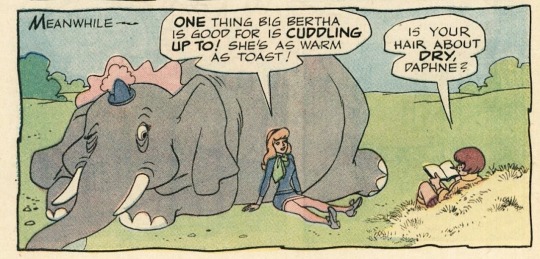



#scooby doo#velma dinkley#daphne blake#hanna barbera#comics#bedlam in the big top#SDWAY#scooby doo where are you
147 notes
·
View notes
Text
I’m sorry but who approved this
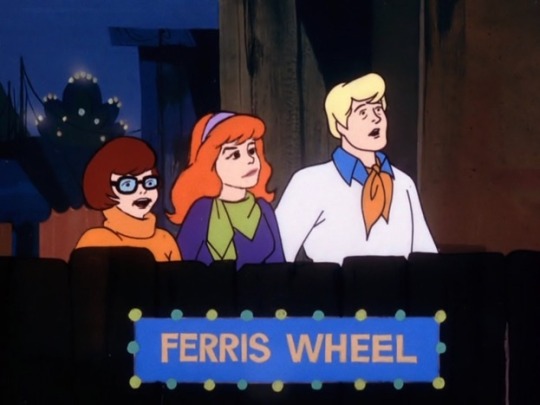
38 notes
·
View notes
Text
The History of Zoinks (Essay)
Includes an etymological and cultural analysis of the usage of "jeepers," "jinkies," and "zoinks." Another post will include the follow-up study.
If you grew up watching Scooby-Doo, it may be easy to assume that groovy green tees, ascots, and vans painted with flowers were all standard 60s fare. However, recall that these teens were not written by teens; when the first episode aired, character designer Iwao Takamoto was 41, main writer Bill Lutz was 47, and creators Joe Ruby and Ken Spears were 36 and 31, respectively. Were they already out of touch? As put by Paul Dini, writer on Scooby-Doo! Abracadabra-Doo: “When you look at those characters, they are characters frozen in time. They’re not really what hippies or hipsters or cool kids were like. They’re what 50-year olds thought cool kids were like” (“Scooby Doo! The Whole World Loves You”).
The most iconic quantifiers of how close these characters were to the “cool kids” is their catchphrases: “jeepers,” “jinkies,” and “zoinks!” When we hear the cartoon’s catchphrases, which claim to characterize this era, we must ask: Did people really say these things? Even though these terms are almost exclusively associated with the franchise today, these words were not born for marketing. The writers were pulling from memories, trends, and histories which, if we trace backwards, may glean some evidence as to their cultural accuracy.
Daphne’s classic “jeepers” is said to have been first penned in 1928 by cartoonist Billy DeBeck, whose popular Barney Google strips coined similar terms as “heebie-jeebies” and “holy moly” (Chakraborty and Dosad 117). The true origin of the word is likely several decades earlier, as Google’s catchphrase “Horsefeathers!” was already coming out of fashion among the construction workers that used it when DeBeck revived it in his parody of Appalachian colloquialisms (Funk and Funk ix-x). At the time DeBeck picked up “jeepers,” it was used as a euphemism for “Jesus!” (Harper, “Etymology of jeepers”).
However, the Scooby-Doo writers were more likely to be familiar with Al Donahue’s song “Jeepers Creepers” (as in, “Jeepers creepers, where’d you get those peepers?”). The song jumped high enough in America’s popular music charts in 1939 that it was covered by Louis Armstrong, Larry Clinton, and later Frank Sinatra (Whitburn 533). As an alteration of “Jesus Christ,” the flexible phrase was perfect for bouncy love ballads (“Oh, those weepers, how they hypnotize!”) and as a horror movie motif in Jeepers Creepers. The fact that the film was released in 2001 speaks to the staying power of “jeepers.”
As for Velma’s catchphrase, “jinkies,” it may be a variation of a number of old Scots terms dating around the 18th-19th century, so you may as well pick your favorite: a synonym for “jauntily” (as “jink,” to dodge or flee; nowadays “to juke” may be applicable), a nonsense word in nursery rhymes (e.g., “Eetum, peetum, penny pie / Cock a lory, jinky jye”), or a child’s nightgown (Dictionary of the Scots Language); a type of knitted fingerless glove (see Kate Davies Designs); or yet, as a derivation of “high jinks,” a drinking game that dates back to at least the 17th century (Harper, “Etymology of jinkies”).
The term was first recorded as exclamation “By jinkies!” in the newspaper strip “Ella Cinders” in 1936. The first recorded use of the term by a human (assuming comic characters can’t mail in letters to the local paper) was in a 1938 edition of the Northern-Courier in the sports section. Ray writes: “By jinkies, on my next pass day I will surely stop and see that 178 foot wheelbase, fire truck. If I can’t make it in one day maybe I can get an extension. Some truck.” (How many feet is the Mystery Machine’s wheelbase, I wonder…?) Again, “jinkies” is preceded by “by,” which Velma, as we all know, would choose to omit. By Scooby’s birthday, the term was popular among college students and “overly earnest” speakers (Iseli), fitting for the youngest of the gang who is always piping up with a clue to prove her intellectual merit.
Unlike “jeepers” and “jinkies,” which have decent pedigrees preceding Scooby-Doo, neither “zoinks” nor “zoink” directly appear in any written work before 1969, although they have a number of distant cousins. The closest approximation comes from television: a famous bit in 1958’s “Robin Hood Daffy” where Daffy swings from tree to tree, calling, “Zoiks, and away!” with each jump, only to crash face-first into a tree every time. His iconic lisp makes it difficult to parse whether he’s saying “zoiks” or “yoiks.” The latter would seem more likely, as “yoiks” and its sister “hoiks” have a long history as hunting words. On a bright and early morning in 1843, Sir Godfrey calls for his friend to hurry and saddle up: “Hoik, 'squire! . . . hoik, hoik! High wind him! Drag on him, yoiks, tally-ho!" (Mills 125). On the tail of a fox chase in 1774, a hunter in pursuit exclaims, “Yoiks, hark forward!” (Kelly 6). Contextually, neither sound too far from the modernized “Zoinks, let’s scram, Scoob!” The first “zoiks” was penned around 1584, in a sonnet of all things: “With mightie maters mynd I not to mell, / As copping Courts, or Comonwelthis, or Kings / Quhais craig zoiks fastest, let tham sey thame sell; / My thoght culd nevir think vpon sik things” (Montgomery 1–4). I can’t claim a clue about what the rest means, but “zoiks fastest” leads me to think this is a “jink”/”juke” situation; in “zoiking”, the narrator is fleeing from the cowersome courts, commonwealths, and kings. Coincidentally, “mynd I not to mell” sounds almost adjacent to “meddle,” another word popularized by Scooby-Doo. All of the “zoinks” family are employed as interjections preceding movement.*
In sum, while “jinkies” appears to have had some relevance at the time of Scooby-Doo’s inception, “jeepers” is a bit dated in comparison, and “zoinks” has a vast etymological tree but no direct precursors. The advantage to having a cast of characters who are, in the words of Paul Dini, “frozen in time,” is that they are living time capsules. We can choose any point within 50 years and see unique perceptions of culture, politics, music, style, and our focus: vocabulary. But how well do these perceptions line up with reality?
*All, that is, except one. “Yoiks” may also be used to refer to egg yolks, as in a cookbook from 1762: “Take a large Fowl, or a Pound of Veal, as much grated Bread, half a Pound of Sewet . . . Mace, two Cloves, half a Nutmeg grated, about a large Tea Spoonful of Lemon-peel, and the Yoiks of two Eggs” (Glasse 38). Add an olive toothpick on top and you have a Shaggy sandwich!
References
Chakraborty, Pritesh, and Anuradha Dosad. “Comic Monthly 1922: Exploring Form and Themes.” Department of English, Vidyasagar University, vol. 15, 2022, pp. 112–125.
“Ella Cinders.” Montana Standard, 29 Sept. 1936, p. 11.
Funk, Charles Earle, and Charles Earle Funk. “Foreword.” Horsefeathers, and Other Curious Words, Harper & Row, New York, 1958, pp. Ix–x.
Glasse, Hannah. “Made-Dishes.” The New Art of Cookery, Made Plain and Easy, John Exshaw, 1762, pp. 38–39.
Harper, Douglas. “Etymology of jink.” Online Etymology Dictionary, 28 Sept. 2017, https://www.etymonline.com/word/jink.
Iseli, Marcel. “Jinkies! You’ll Never Believe What Velma’s Catchphrase Means.” Linguablog, Iseli International Commerce, 18 Sept. 2022, linguaholic.com/linguablog/jinkies-scooby-doo/.
"Jinkie." Dictionary of the Scots Language, Scottish Language Dictionaries Ltd, 2004, http://www.dsl.ac.uk/entry/snd/jinkie_adj
Kate Davies Designs. “Jinkies Pattern.” Ravelry, SARK, Nov. 2021, www.ravelry.com/patterns/library/jinkies.
Kelly, Hugh. “Epilogue.” The Romance of an Hour: A Comedy of Two Acts in Prose. G. Kearsley, 1774, line 6.
Mills, John. “A Meet of the Olden Time.” Ainsworth’s Magazine, edited by William Harrison Ainsworth, vol. 4, Chapman and Hall, London, 1843, p. 125.
Montgomery, Alexander. “To R. Hudsone (Sonnet 2).” The Poems of Alexander Montgomery, edited by David Irving, James Ballantyne and Company, 1821, pp. 76.
Szymborska, Wislawa. “Moment.” Monologue of a Dog. Houghton Mifflin Harcourt, 2005, pp.11-13.
Ray. “Diamond Dust.” The Courier-Northerner, 29 July 1938, p. 8.
"Scooby Doo! The Whole World Loves You." Scooby-Doo, Where Are You! The Complete 1st and 2nd Seasons, produced by Hanna-Barbera and Warner Bros. Entertainment Inc, 2010. DVD.Whitburn, Joel. “The Songs.” Joel Whitburn’s Pop Memories 1890 - 1954: The History of American Popular Music, Record Research Inc, Menomonee Falls, WI, 1986, p. 533.
12 notes
·
View notes
Photo
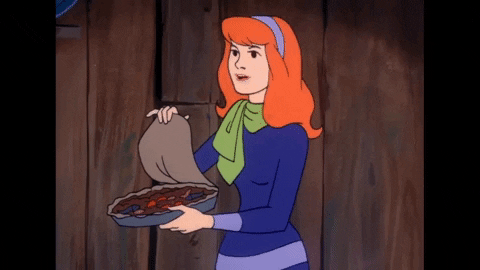
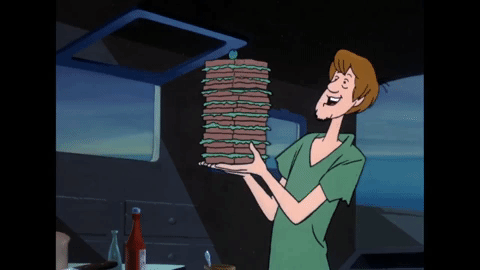
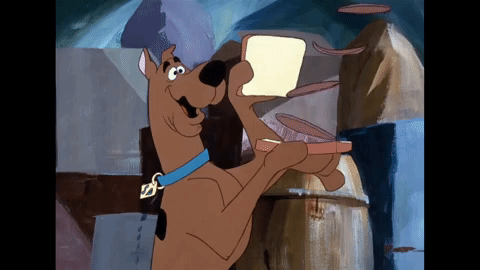

(via GIPHY)
#giphy#animation#cartoon#scooby doo#scooby#daphne blake#scooby doo where are you#fred jones#velma dinkley#shaggy rogers#70s cartoons#scooby snacks#norville shaggy rogers#scoobyedits#sdway
29 notes
·
View notes
Text

painting practice!! recreated a scene from a clue for scooby doo from sdway
#ik it looks very similar but that was the goal I swear#scooby doo#sdway#fanart#painting#digital#my art
77 notes
·
View notes